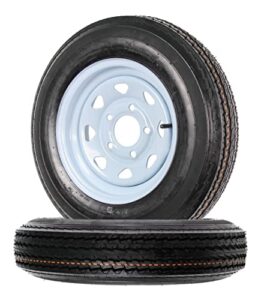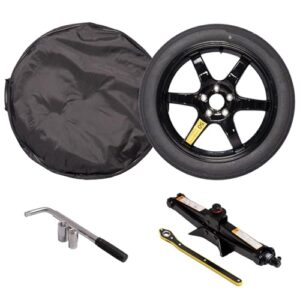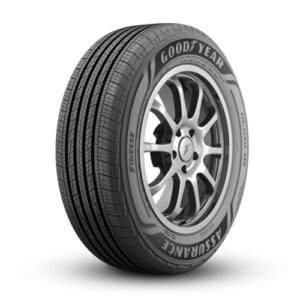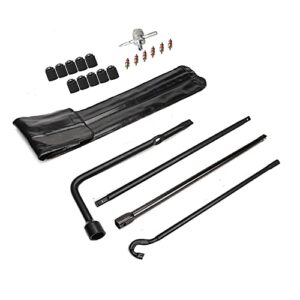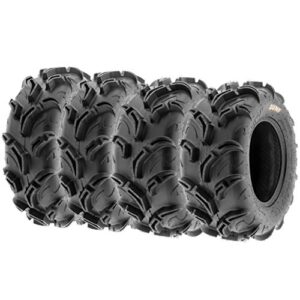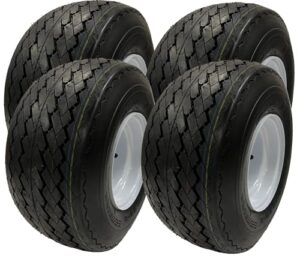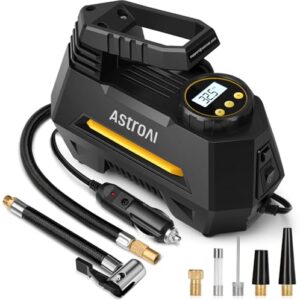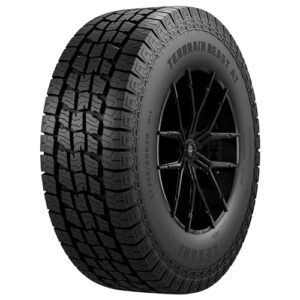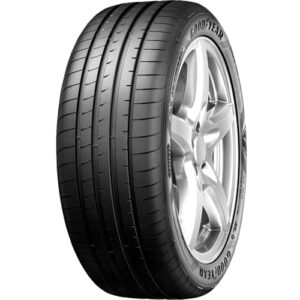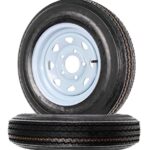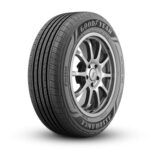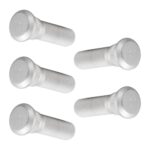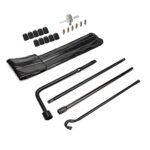Tire rotation involves changing the position of a vehicle’s tires to ensure even wear. Alignment adjusts the angles of the tires so they contact the road properly.
Maintaining your vehicle is crucial for safety and performance, and among the essential services are tire rotation and alignment. Tire rotation helps extend the life of your tires by evenly distributing wear across all tires. This process can save money over time and improve your vehicle’s traction.
On the other hand, wheel alignment, often referred to as tire alignment, ensures your tires are perpendicular to the road and parallel to each other. This adjustment reduces uneven tread wear and can improve handling and fuel efficiency. Distinguishing between these two services will help car owners make informed maintenance decisions, keeping their ride smooth and their tires in good shape. Both procedures complement each other to improve vehicle longevity and driving experience.
Tire Rotation Vs. Alignment: Setting The Stage
Keeping your car in good shape involves more than just oil changes. Your car’s tires also need attention. This is where tire rotation and alignment come into play. They are not the same, though. While both are crucial for a smooth ride, each serves a unique purpose. Think of tire rotation as a teammate to alignment. They work together to keep your car moving straight and reduce tire wear.
Purpose Of Tire Rotation
Rotating your tires means moving them from one position on your car to another. This is key for even tire wear. It means all your tires work the same amount. If you don’t rotate, some tires might wear out faster. This can lead to a bumpy ride or even a blowout.
- Even tire wear – Keeps all four tires in similar condition.
- Improved performance – Helps your car drive smoother.
- Extended tire life – Tires last longer when worn evenly.
Goals Of Wheel Alignment
Wheel alignment, also known as tire alignment, involves adjusting the angles of your tires. This ensures they make proper contact with the road. Alignment is about precision and safety. It makes sure your car drives straight and reduces strain on the tires.
| Alignment Goal | Benefit |
|---|---|
| Straight Tracking | Car drives without pulling to one side. |
| Reduce Strain | Prevents excess tire wear. |
| Safe Handling | Improves steering and safety. |
Tire rotation and alignment are both vital. They keep your tires lasting longer and your rides safer. Be sure to have a professional check both regularly.

The Fundamentals Of Tire Rotation
Tire rotation is key to extending tire life. It ensures even wear across all tires. Your vehicle drives smoother longer. Each tire handles different stresses. That’s why rotation is crucial. Front tires bear more weight. They wear differently than rear ones. By rotating them, you balance tread wear. This makes for better handling and safety.
How Tire Rotation Works
Garages and service centers follow specific steps for tire rotation. First, they lift your car. Then, they unbolt and remove wheels. Next, technicians reposition tires according to a set pattern. Finally, they bolt tires back on securely. After rotation, air pressure is checked. Adjustments ensure equal pressure across all tires.
Recommended Rotation Patterns
vehicles need different rotation patterns. Consult your manual. It provides the best pattern for your car. Generally, patterns vary depending on:
- Drive Type: Front-wheel, rear-wheel, all-wheel, or four-wheel
- Tire Type: Directional or non-directional
- Vehicle: Whether spare tire is included
Standard patterns include:
- Front to Back: For directional tires
- X-Pattern: For front-wheel drive vehicles
- Side to Side: For high-performance tires
- Rearward Cross: For rear-wheel or four-wheel drive
Mechanics rotate your tires following these guidelines. This helps maintain balanced handling, even wear, and maximizes tire lifespan.
Wheel Alignment Demystified
Understanding how a car handles road challenges is crucial. Proper wheel alignment plays a key role in your vehicle’s performance. People often mix tire rotation with alignment, but they’re different. While rotation involves changing tires’ positions, alignment adjusts the wheels’ angles to the car. This ensures optimal contact with the road. Let’s clarify what wheel alignment involves and how it affects your drive.
Alignment Angles And Measures
Wheel alignment consists of adjusting three main angles. These are camber, caster, and toe. Here’s what they mean:
- Camber – This is the tilt of your tires. Seen from the front, positive camber means the top leans out, while negative camber leans in.
- Caster – Think of this as the steering pivot angle. It can affect balance, cornering, and stability.
- Toe – This is the direction your tires point. Toe-in means tires point toward each other. Toe-out means they point away.
Technicians use specialized equipment to measure these angles. They adjust them to the manufacturer’s specifications. A well-aligned vehicle handles better and keeps tires from wearing unevenly.
Signs Your Car Needs An Alignment
Regular checks preserve alignment. Still, some signs suggest your car needs immediate attention:
| Sign | What It Means |
|---|---|
| Steering wheel off-center | When your steering wheel isn’t straight while driving on a level road, get an alignment. |
| Uneven tire wear | Look for patterns or places where the rubber wears down faster than others. |
| Pulling to one side | If your car drifts without steering input, it’s time to check alignment. |
| Noisy Steering | Squealing or other unusual sounds can indicate misalignment. |
Ignoring these signs may lead to bigger issues. Timely alignment checks ensure a smooth and safe drive. They also prolong the life of your tires. Bring your car to a professional if you notice any of these issues.

The Impact On Vehicle Performance
Regular vehicle maintenance ensures smooth rides. Tire rotation and alignment directly affect how a car drives. Ignoring these can lead to problems. Improved safety and better fuel efficiency are top benefits of proper upkeep. We’ll see how each process helps your vehicle’s performance.
Effects Of Rotation On Tire Life
Tire rotation extends tire lifespan. It involves switching the position of your tires. This ensures even wear. It’s crucial for keeping a balance in tire tread wear. Here’s what it does:
- Prevents uneven tread wear
- Ensures consistent handling and traction
- Saves money on tire replacements
| Before Rotation | After Rotation |
|---|---|
| Uneven wear | Even distribution of wear |
| Risk of blowouts | Reduced tire failure risks |
| Compromised performance | Optimized driving stability |
Consequences Of Misalignment On Handling
Alignment keeps tires at correct angles. Misalignment affects handling. Tires struggle to grip the road. This causes steering troubles and safety issues. Here are some outcomes of poor alignment:
- Decreased control during maneuvers
- Tire edges wear out quicker than usual
- Increased strain on car suspension
Correct alignment promises a smoother and safer journey. Always fix misalignment immediately.
Frequency And Timing
Understanding the frequency and timing of tire rotation and alignment is crucial. It ensures longevity of tires and optimal vehicle performance.
Best Practices For Tire Rotation
Regular tire rotation extends tire life and improves safety. Most manufacturers recommend tire rotation every 5,000 to 8,000 miles. Follow these best practices for effective results:
- Follow your vehicle’s owner manual: It has the specific rotation pattern for your car.
- Check tire pressure: Do this before rotation for even wear.
- Inspect tires: Look for damage that might need repair.
- Keep records: Track rotations to maintain a schedule.
Knowing When To Get An Alignment
Alignment ensures your tires meet the road at the correct angle. Get an alignment if you notice:
- Uneven tire wear: It’s a sign of misalignment.
- Pulling to one side: Your car should drive straight.
- Steering wheel vibration: It indicates alignment issues.
Most services suggest alignment every 2 to 3 years. Yet, always check after events like hitting a curb or potholes.
Diy Vs. Professional Service
When it comes to maintaining your vehicle, understanding the services your car needs is crucial.
Tire rotation and alignment are two different procedures that can extend the life of your tires and improve your car’s performance.
Many car owners ponder over whether they can perform tire rotation themselves or need to seek professional services for both tasks.
Can You Rotate Tires At Home?
Rotating tires at home is possible with the right tools and knowledge.
It involves changing the positions of your tires to promote even tire wear. Here’s what you’ll need:
- A car jack
- Lug wrench
- Car owner’s manual
- Jack stands for safety
By following your vehicle’s manual, you can ensure a correct rotation pattern.
Remember, improper handling can lead to injury or damage to your vehicle.
Always prioritize safety and consult a professional if uncertain.
Why Professional Alignment Is Crucial
Alignment, unlike tire rotation, is a complex process.
It requires specialized equipment and expertise to adjust your vehicle’s suspension system. This service:
| Improves | Driving safety and comfort |
|---|---|
| Improves | Fuel efficiency and tire longevity |
| Corrects | Wheel angles to manufacturer specifications |
Since alignment is integral to your car’s health, relying on professionals ensures accuracy and prevents expensive repairs.
Professional mechanics use precise measurements and tools to ensure wheels are perfectly aligned.
This precision is difficult to achieve with a DIY approach.
Cost Considerations
When it comes to vehicle maintenance, understanding cost considerations is key. Keeping your car in top shape involves various services. Two critical services are tire rotation and alignment. Both services have different price tags. This section explains these costs and how they can affect your wallet over time.
Investing In Routine Tire Maintenance
Regular tire rotation is a smart investment. This service extends the life of tires. It ensures even wear and tear. A tire rotation might cost between $20 to $50. This price can vary based on the vehicle type.
Skipping this service can lead to higher expenses later. New tires can be costly. Prevention always saves money.
| Service | Cost | Frequency |
|---|---|---|
| Tire Rotation | $20 – $50 | Every 5,000 – 8,000 miles |
Long-term Savings From Regular Alignment Checks
A wheel alignment ensures your car drives straight and handles well. This service can prevent uneven tire wear. Improper alignment can also increase fuel consumption.
- An alignment typically costs between $65 to $100.
- Professionals recommend an alignment check once a year or after hitting a pothole hard.
- Correct alignment can save money on tires and reduce fuel costs.
Alignments can avoid costly repairs in the future. They protect your vehicle’s suspension and steering components.

Innovations In Tire And Vehicle Maintenance
Keeping your vehicle in top shape is essential.
Tire rotation and alignment are key practices.
But new tech is changing how we maintain our cars.
Advancements In Tire Technology
Smart Tire Systems are now in play. These tires can report their own health.
Tread wear and air pressure send alerts to your phone. This means no more guesswork.
- Automated Tire Rotation Reminders: Sensors tell you when it’s time to rotate.
- AI Driven Wear Analysis: Artificial intelligence predicts tire lifespan.
Self-Repairing Tires can fix punctures. No need to swap out immediately.
Future Of Alignment Services
Automated Alignment Machines are the game-changer.
They fine-tune your vehicle’s suspension with robot precision.
Expect to see more of the following soon:
- Mobile Alignment Services: Techs come to you for on-site adjustments.
- Subscription-Based Maintenance Plans: Alignments included as part of a service package.
And with connected car tech, your car may book its own alignment appointments!
Closing Remarks: Optimal Vehicle Care
Ensuring your vehicle is in top shape requires regular care. Many wonder about tire rotation and alignment. Both are vital but serve different purposes. Let’s recap and encourage ongoing car maintenance.
Summary Of Key Takeaways
Tire rotation involves changing tire positions. Alignment adjusts the angles of tires. Both ensure even wear and a smooth ride. Regular checks prevent costly repairs. It’s not just about longevity but also about safety.
- Tire rotation: extends tire life, improves performance.
- Alignment: corrects tire angle, prevents steering issues.
Encouragement For Maintenance Discipline
Keeping up with car maintenance pays off. Practice these routines. It saves money and keeps you safe. Don’t wait for problems. Be proactive. Schedule regular checks. Embrace the discipline. Your car will thank you!
- Consult your vehicle’s manual for guidelines.
- Stay on top of tire rotations and alignments.
- Visit a trusted mechanic regularly.
Frequently Asked Questions
Can Tires Be Rotated Without Alignment?
Yes, tires can be rotated without doing an alignment. However, it’s essential to check your vehicle’s alignment periodically for optimal tire wear and handling.
How Often Should You Get An Alignment?
Most experts recommend getting an alignment every two to three years. Yet, if you notice uneven tire wear or steering issues, seek an alignment immediately. Regular driving conditions can necessitate more frequent alignments. Always consult your vehicle’s manual for specific guidance.
How Much Is A Good Alignment?
A good wheel alignment typically costs between $50 and $100, depending on vehicle type and location. Specialty and luxury vehicles may incur higher fees, with prices reaching up to $200. Always check for specials or promotions at local service centers to potentially reduce costs.
Does Tire Rotation Include Balancing?
Tire rotation typically does not include balancing. Balancing is a separate service that ensures even tire wear and a smooth ride.
Conclusion
Understanding the difference between tire rotation and alignment is crucial for vehicle maintenance. Tire rotation extends tire life and increases performance. Alignment ensures smooth driving and protects suspension components. Regularly scheduling both services is key to vehicle longevity and safety.
Don’t neglect these essential car care steps.




